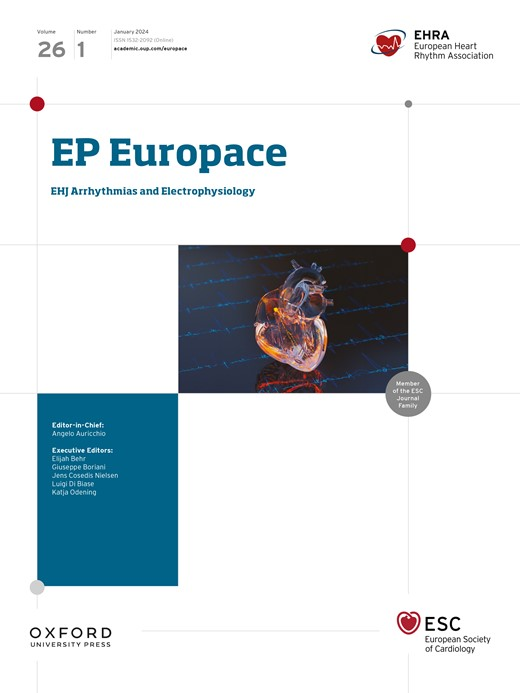心脏骤停时的心律是多少?有争议的教条还是真实的事实?
IF 7.9
1区 医学
Q1 CARDIAC & CARDIOVASCULAR SYSTEMS
引用次数: 0
摘要
人们普遍认为,恶性室性心律失常(VA)是心脏骤停和心源性猝死(SCD)的主要直接初始原因,但不同的数据倾向于表明,在心脏骤停时,无搏动或无脉活动正成为最普遍的心律。我们在这里挑战这些观念,并强调VA在SCD中的持续突出作用。本文章由计算机程序翻译,如有差异,请以英文原文为准。
What's the cardiac rhythm at the time of cardiac arrest? Disputed dogma or true fact?
It was widely accepted that malignant ventricular arrhythmias (VA) are the main direct initial cause for cardiac arrest and sudden cardiac death (SCD), but diverging data tended to demonstrate that asystole or pulseless activity were becoming the most prevalent cardiac rhythms at the time of cardiac arrest. We challenge here these conceptions and reinforce the persisting prominent role of VA in SCD.
求助全文
通过发布文献求助,成功后即可免费获取论文全文。
去求助
来源期刊

Europace
医学-心血管系统
CiteScore
10.30
自引率
8.20%
发文量
851
审稿时长
3-6 weeks
期刊介绍:
EP - Europace - European Journal of Pacing, Arrhythmias and Cardiac Electrophysiology of the European Heart Rhythm Association of the European Society of Cardiology. The journal aims to provide an avenue of communication of top quality European and international original scientific work and reviews in the fields of Arrhythmias, Pacing and Cellular Electrophysiology. The Journal offers the reader a collection of contemporary original peer-reviewed papers, invited papers and editorial comments together with book reviews and correspondence.
 求助内容:
求助内容: 应助结果提醒方式:
应助结果提醒方式:


